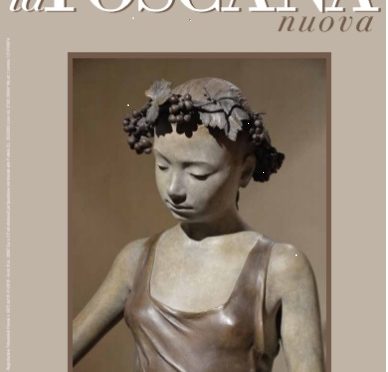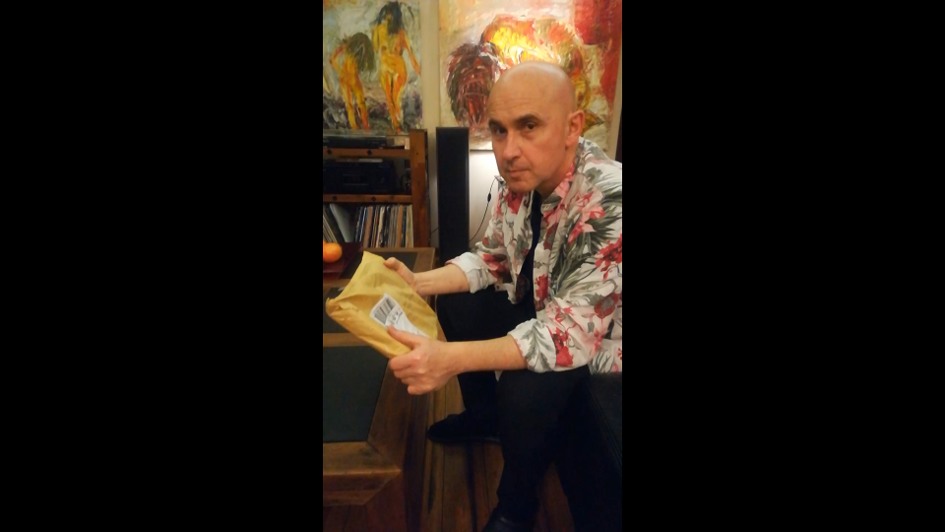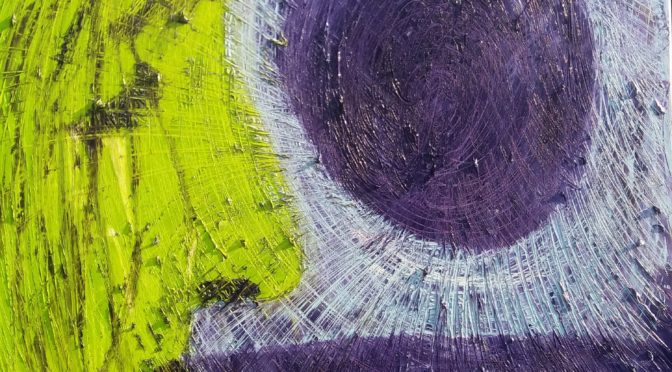Krzysztof Konopka became an artist late and almost by accident
An event of great unease, which upset his life, made him change the habits and personality but has
allowed him to see the world through the artist’s eyes. His encounter with art was like waking up
from a long hibernation.
An artist came out of the common man just as a colored butterfly comes out of the gray cocoon.
Time spent inertia was not wasted because served him like meditation and silent personal
maturation, where the observation of nature, allowed Konopka to develop his imagination.
Krzysztof has gained strong empathy with everything around him. Following his personal
transformation, he has taken a leap forward in professional research, burning the stages and soon
collecting in his curriculum very important international exhibitions.
He has exhibited relentlessly first in Warsaw, then in London, Amsterdam and Rome. Last year in
2019 his colorful canvases were presented in Florence during the Biennale of Contemporary Art,
where the Selection Commitee have recoginise his style and where his artworks have received the
great admiration among the large pubblic. His approach to the painting grew up from the avantgardes of the twentieth century as favism and expressionism which elements are later transformed
creating the personal style that the artist has called orapizmo. With spontaneous brush strokes that
ripple and scratch the surface of the canvas, he superimposes his emotional chaos on the images
represented, transmitting the freshness and naturalness of his gesture. In this way the artist becomes
a conductor and catalyst revealing and amplifying our hidden in the unconscious emotions .
He brings out our primodial sensations by capturing them in his tangle of colors and invoices from
different textures. The real world is always the starting point for his works, but the vision is
transformed through the action of chromatic superimpositions. Konopka In his composition is often
inspired by the female figure, where eroticism plays an important role, but at the same time
underlines the strong color sensations inspired by nature, and presenting the painted object and its
background as the unique set of colors. The background scenary is very important for Polish artist,
where the mother nature offers many creative opportunities. In his works very often the dense
textures of the colors, put with the spatula on canvas, allude to the waves of the sea, the vortige of
the water and movement of the wind between clouds. Thanks to this technique the viewer receives
a message of our belonging as a species to the environment. The Human and nature are one.
Through his particular technique dictated by the immediate artistic gestures like action painting, his
artworks obtains a bas-relief effect of color receiving in this way the aspect of typical primitive
decorative and ritual art . His artworks have pure colors like in the Favism, however the
consistency is different and very often in last phase of the work the movement is added.
His paintings emanates energy and are pulsating with life in the same way like the nature do. The
action of painting is immediate and represents a moment of the artist’s wild liberation. This feeling
can be easly noticed by the viewer. The figurative subjects of his canvas is hidden under thick layer
of painted textures with bright and contrasting colors. The painter becomes a psychoanalyst and
through his art allows to the viewer to discover his unconscious emotions. The empathy between
the artist and the public is established immediately by the use of optical art illusions of cromatic
vibrations created on the canvases , which very often allude to electromagnetic waves, capturing
the view of the observer. The
Range of chosen shades often involves passionate and lively colors like yellow, orange and red,
contrasted by the green and blue which are caratteristic of Vincent van Gogh’s expressionism and
Paul Gauguin’s favism. Sometimes Krzysztof Konopka paints in layers so that the underlying part
emerges and intertwines with the one above.
This creates a chromatic dialogue between the surfaces and invites to a deeper reading of the work,
able to bring out the ancient emotions and desires, scrutinizing every corner of our soul.
Konopka’s canvases generate great energy and positivity, illustrating the force of nature and being
hymn to life commanded by instinctive and primordial forces.
Like in the abstract expressionism, the same way for the Polish artist, painting becomes a
psychological action, but instead of an existential background it is a primordial empathic impulse of
connection with nature. The artist creates his paintings guided by this impulse and without a project,
letting the composition reveal our hidden truths while viewing the work .
The pilgrimage to Santiago di Campostella was fundamental life’s event for Krzysztof Konopka that
sparked a strong creativity.
Konopka as artist was born in Santiago – first with his travel journal sketches and taking
photographs of his own pilgrim’s shadow, projected on always different paths and landscapes.
In the early years dedicated to painting, her visions were linked to the figure in a more descriptive
way. The nudes of a woman full of energy and charged with eroticism, intended as a generator of
life and passion, represents the center of gravity of the composition .
The sexual act intended as a spiritual and energetic exchange often appears in the themes of the
works, but the figurative narratives of the canvases seems to be obscured by the windows of the
cathedrals, which sparkle with color and light, leading to our spiritual part.
The reference to sacredness it is also underlined in the visions of the facades of churches and the
skyline of distant cities dominated on the horizont by their bell towers.
This continuous intertwining of carnality and spirituality confirm the complex balance existing in
human life between real and inner world.
Konopka’s works, however, allow to very individual interpretation by offering only the medium for
personal psychological analysis.
The artist is using the theme of sexual intercourse as inspiration in the initial phase of the work to
be subsequently deprived this of any form in the simplification process.
At first glance the work seems to be informal and only a careful observation and analysis of the
painting reveals the hidden subject.
The erotic act is intended as a meeting point between two universes, the male and female one
where exchange of energies takes place.
Several works by Krzysztof Konopka resemble Kooning’s artistic production, however
subsequently losing the clarity of form and developing their perception of the world, which tends
progressively towards the informal.
The Polish artist is using effect of a frottage made by the colors put on by impulse-action like
Pollock did but instead of splashing the paint he hurls itself on the canvas with the dense spatula
of color and transforms its emotional energy into a pictorial work.
During the recent edition of the Florence Biennale in 2019, the artist was publicly recognized as the
precursor of a new current called Orapizmo (which means from the Portuguese-access track), which
processes and develops abstract expressionism, favism and informal painting, to create the basis for
new style of visual art.
Krzysztof Konopka in next season will partecipate to artistic tour taking part in the second edition
of the AqvArt event at Palazzo San Teodoro in Venice, then he will exhibit in an important
international show -the homage to Tamara De Lermpicka.
/Arch.Margherita Blonska Ciardi/
Archiwum kategorii: Bez kategorii
Krzysztof Konopka na XII Biennale Sztuki Współczesnej w Florencji w 2019 roku – artysta polski wystąpił jako prekursor i propagator Orapizmu – nowego kierunku sztuki abstrakcyjnej .
Krzysztof Konopka stał sie artystą późno i prawie przez przypadek. Nagłe wydarzenie, które miało miejsce w jego życiu, sprowokowało totalną zmianę osobowości i pozwoliło zobaczyć świat oczami artysty. Było to jak przebudzenie z długiego letargu.
Z człowieka przeciętnego wyszedł artysta, tak jak z szarego kokonu wylatuje kolorowy motyl.
Czas który przeminął w bezwładności, nie był czasem straconym, bo służył do cichego osobistego dojrzewania, gdzie obserwowanie natury pozwoliło mu rozwinąć własną fantazję.
Krzysztof wyrobił sobie osobisty pogląd na wszystko to co go otacza. Wynikiem jego transformacji był ostry start ,w którym podczas licznych doświadczeń artystycznych zaliczał w swoim curriculum wiele ważnych wystaw miedzynarodowych.
Wystawiał bez wytchnienia – najpierw Amterdam 2017, potem Warszawa 2017, Londyn 2018, Rzym 2019 , Rzym 2020 ,Warszawa 2020 .W 2019 jego bogate w kolory płótna zostały zaprezentowane we Florencji podczas XII Biennale Sztuki Współczesnej, gdzie zdobyły uznanie Komisji selektywnej i wzbudziły entuzjazm licznej publicznosci .
Czerpiąc wpływy z awangard dwudziestego wieku takich jak fowizm i ekspresjonizm, poprzez trasformacje elementów, otrzymał osobisty styl, który artysta nazwał orapizmem. Spontanicznymi pociągnięciami pędzla i szpachli, marszczy on i drapie powierzchnie płótna, nakładajac warstwowo kolory, pod wpływem chaosu emocjonalnego, na figury poprzednio namalowane. Przekazuje świeżość i naturalność swojego gestu twórczego. W ten sposób artysta staje się przekaźnikiem i katalizatorem, środkiem do ujawniania i pokazania naszych ukrytych w podświadomości emocji. Wyciąga nasze odczucia prymordialne, łapiąc je w swoją sieć kolorów i faktur o różnorodnym wzorze.
Świat rzeczywisty stanowi zawsze początkowy punkt odniesienia dla obrazów artysty, ale jego wizja zostaje potem transformowana poprzez gest składajacy się z chromatycznych nałożeń powierzchni.
Postać kobieca jest częstym źródłem inspiracji Konopki, stanowiąc centrum kompozycji o tematyce erotycznej, uwydatnionej poprzez mocne impresje kolorystyczne, zaczerpnięte z przyrody. Przedstawia malowany obiekt i jego tło, jako jedność tonalną, gdzie zostaje zatarta linia konturów .
Polski artysta inspiruje się bodźcami kreatywnymi zaczerpniętymi z natury. Często obserwujac jego gęstą fakturę kolorów nałożonych szpachlą na płótno, można zauważyć aluzje do ruchu fal morza lub wiatru przemieszczającego chmury .
Dzięki tej technice przekazuje obserwatorowi świadomość jego przynależności do gatunku ludzkiego i bliskiej relacji ze środowiskiem, którego jest on częścią/jednością/. Poprzez swoją specyficzną technikę , wynikajacą z ekspresji artystycznej typu natychmiastowej akcji gestu- /action painting, otrzymuje on jako efekt stratyfikacji kolorystycznej, mający aspekt ornamentacji rytualnej/orificzny/ charakterystycznej dla sztuki prymitywnej. Tak jak w fowizmie kolory są tu czyste, podstawowe i mocne, ale ich konyistencja jest jednak inna i podczas fazy pracy zostaje dodany efekt ruchu. Obrazy Konopki tak samo jak przyroda , emanują energią i pulsują życiem. Egzekucja malarska jest natychmiastowa i przedstawia moment dzikiego wyzwolenia artysty.
To odczucie zostaje odczytane w jego pracach i odebrane przez widza. Temat figuratywny jego obrazów, gubi się pod warstwami jaskrawych kolorów nałożonych warstwami i kontrastujacych ze sobą .Malarz staje się podświadomym psychoanalitykiem , który poprzez sztukę pozwala obserwatorowi odkryć i wyciągnąć własne ukryte emocje. Empatia między artystą a publicznością stabilizuje się natychmiastowo poprzez wibracje chromatyczną płócien, które często symulują fale elektromagnetyczne, przyciągajac wzrok widza poprzez iluzje optyczną . Gama wybranych tonacji często pada na kolory życia i pasji/czakry/, takie jak żółć, pomarańcz, czerwień , często kontrastujące z zielenią i odcieniami niebieskiego, tak jak w obrazach ekspresjonistycznych Van Gogha i fowistycznych Paula Gauguina. Niektóre prace Krzysztof Konopka maluje warstwowo w taki sposób, że powierzchnie kolorystyczne znajdujące się w głębi wydobywają się i mieszają z nowymi warstwami. Daje to efekt dialogu między kontrastującymi ze sobą powierzchniami kolorystycznymi i zaprasza do głębszej analizy pracy, która prowadzi do wydobywania własnych atawistycznych emocji i ukrytych w zakamarkach naszej podświadomości pragnień.
Płótna Konopki emanują wielką energią i pozytywnością, demonstrując nam siłę natury, będąc proklamacją życia, którym rządzą instyktowne siły pierwotne. Tak jak w ekspresjonizmie abstrakcyjnym dla polskiego artysty malarstwo staje się gestem psychologicznym, ale zamiast poświęcać się analizie egzystencjalnej jego impuls artystyczny przedstawia pierwotną przynależność do natury. Artysta tworzy swoje prace kierowany tym właśnie instynktem, bez żadnego preliminarnego planu kompozycyjnego, pozwalajac aby obraz ujawanił nam podczas jego oglądania naszą skrytą w podświadomości prawdę.. Pewne wydarzenie w życiu Krzysztofa Konopki spowodowało, że nagle i niespodziewanie obudziła się w nim kreatywność. Była nim pielgrzrymka do Santiago de Campostela. W Santiago narodził się Konopka artysta. Początkowo powstawały szkice z dziennika podróży, podczas której fotografował również własny cień jako pielgrzyma na tle zmieniajacego sie ciągle krajobrazu.
W pierwszych latach poświęconych malarstwu /2014 -2018/, jego wizje są związane z postacią przedstawianą w sposób opisowy. Liczne Akty tchną erotyzmem, w których kobieta pokazana jako źrodło życia i namiętności, umieszczona w centrum kompozycji, emanuje energią. Temat aktu seksualnego jako ekspresji, wymiany duchowej i energetycznej zajmuje częste miejsce w tematyce jego prac, ale pokazane kształty postaci w jego płótnach zdają się być jakby ukryte za filtrem witraży katedr, których kolory lśnią w blasku światła, przywołujac naszą stronę duchową. Odnośnik do tematyki sakralnej jest podkreślony również poprzez zarys fasad kościołów i na tle nieba odległych miast z charakterystycznymi dzwonnicami, które często pojawiają się w kompozycjach. Ciągłe przeplatanie się “sacro w profano” tak jak świata cielesności z sakralnością, udowadnia jak trudno jest znaleźć człowiekowi równowagę między rzeczywistością a duchownością. Prace Konopki pozwalają jednak na odbiór bardzo indywidualny, dając tylko środek do osobistej analizy psychologicznej. Temat aktu seksualnego służy artyście tylko jako inspiracja w pierwszej fazie pracy, aby następnie pozbawić kompozycję jakiejkolwiek formy, która zostaje zagubiona w procesie symplifikacji.
Obraz zostaje odebrany po pierwszym wrażeniu jako informalny i tylko uważna obserwacja i przybliżona analiza, pozwala odsłonić przedstawioną prawdziwą tematykę . Akt miłosny jest pokazany jako punkt spotkania się dwóch wszechświatów – męskiego i kobiecego , gdzie następuje wymiana energii. Wiele prac Konopki przypomina produkcję artystyczną Kooninga, tracąc jednak nastepnie wyrazistość formy i rozwijając własny odbiór świata, który dąży progresywnie do informalizmu. Efekt frotażu o kolorach nałożonych impulsowo, poprzez action, gdzie zamiast pryskać werniksem jak Pollock, artysta rzuca się na płótno ze szpachlą pełną gęstego koloru, aby zamienić własną energię emocjonalną w dzieło malarskie.
W 2020 artysta będzie brał udzial w Biennale w Skopje i w dwóch innych ważnych wystawach. Pierwsza to będzie event, który odbędzie się w maju 2020 w Mediolanie , gdzie zaprezentuje on swoje prace, podczas miedzynarodowej wystawy, towarzyszacej ekspozycji poświęconej sztuce Tamary De Lempickiej. We wrześniu 2020 ” Orapizm ” Konopki pojawi się w Wenecji na evencie ” AqvArt „, który odbędzie się w Pałacu San Teodoro niedaleko Placu Świetego Marka i mostu Rialto.
Podczas ostatniej edycji florenckiego Biennale, artysta otrzymał oficjalne uznanie jako prekursor nowej formy abstarkcjonizmu, zwanej orapizmem ORA PISMO (teraz pismo, szkic, rysunek, teraz robienie, rytuał), która to analizując i rozwijając ekspresjonizm abstarkcyjny, fowizm i malarstwo informalne, daje podstawy do nowego stylu interpretacji plastycznej.
/Margherita Blonska Ciardi/
CZASOPISMO WŁOSKIE ,,LA TOSCANA NOVA” PRZEDSTAWIA ORAPIZM NOWY NURT W SZTUCE ABSTRAKCYJNEJ

NA XII EDYCJI FLORENCE BIENNALE,
POLSKI MALARZ,
KTÓRY STWORZYŁ ORAPIZM,
NOWY NURT SZTUKI ABSTRAKCYJNEJ
KRYTYK SZTUKI
DI MARGHERITA BLONSKA CIARDI

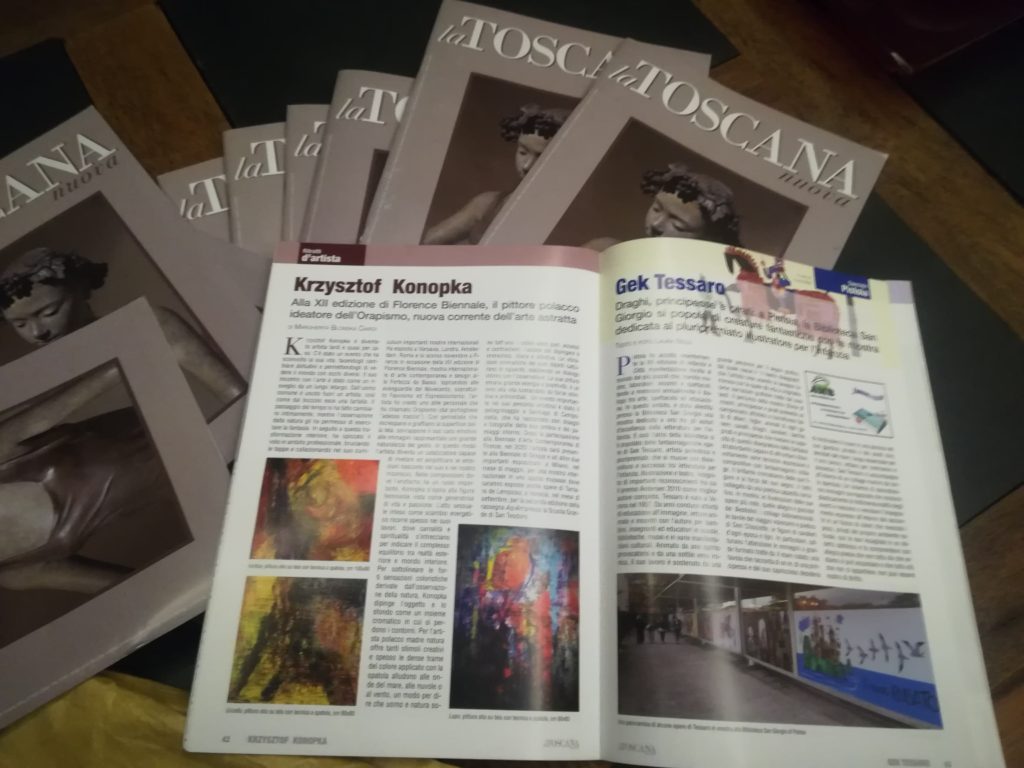
Krzysztof Konopka (ORAPISTA) – „DARIO FO E L’ARTE CONTEMPORANEA”
KRZYSZTOF KONOPKA (ORAPISTA) – DARIO FO
WSPÓŁCZEŚNI ARTYŚCI
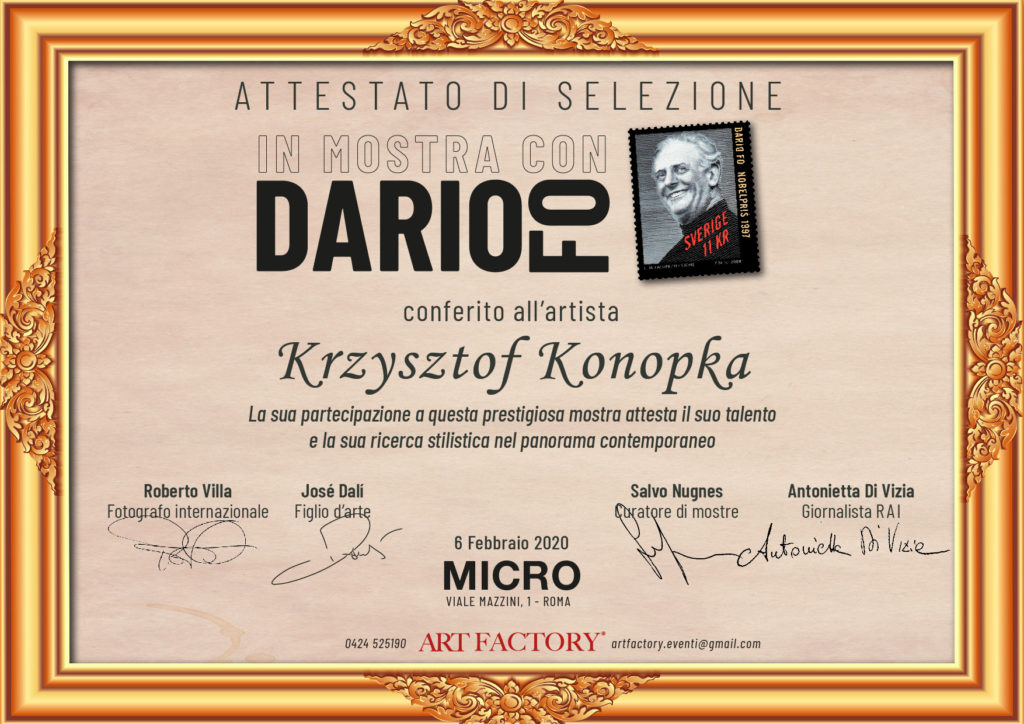
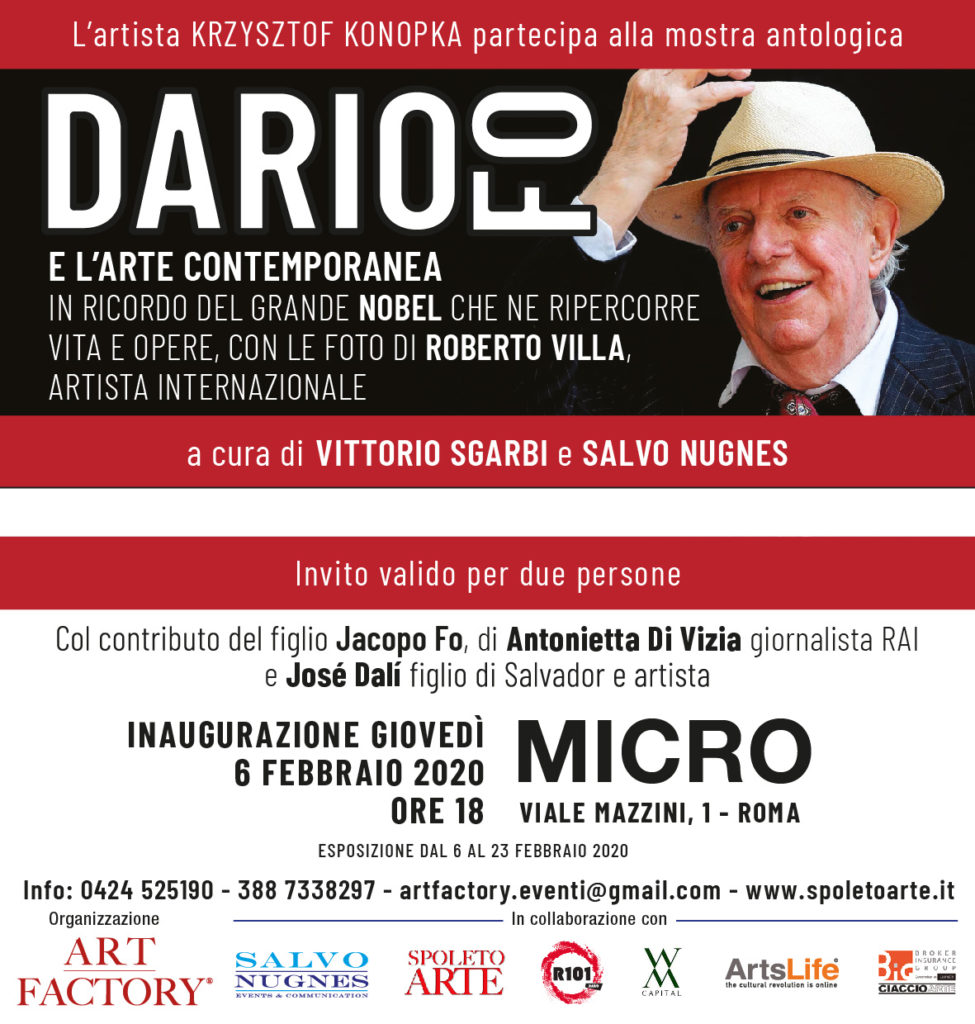

Memory of XII Florence Biennale
RESURRECTION (polski)
2019
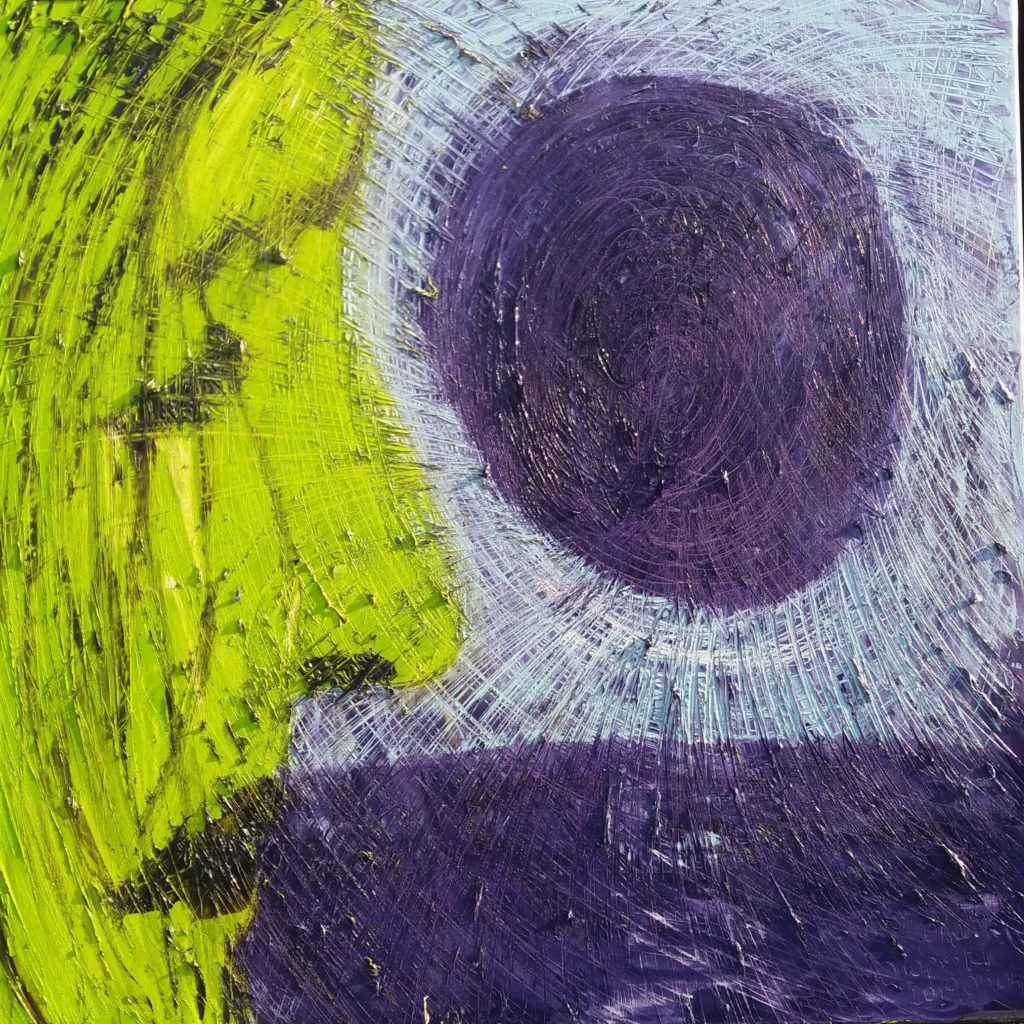
W tej pracy wyłania się potrzeba Konopki, aby powrócić do figuracji, by zbliżyć się do tego, co oko widzi obserwując otaczającą rzeczywistość przez filtr duszy. Towarzyszy temu to samo uczucie, którego doświadcza się przy ponownym powstaniu z głębokości istoty, po którym artysta chce stawić wszystkiemu czoła z nowym punktem widzenia, kiedy nie musi już więcej odcinać się od tego, co widzialne, ale czuje, że może powrócić do opisywania z nową samowiedzą, bezprecedensową świadomością, równowagą między czuciem i zrozumieniem, że podróż wgłąb siebie była pouczająca. Dotarcie do nowego życia miało znaczenie zarówno w najbardziej dosłownym tego rozumieniu, jak i w wymiarze duchowym, i jest wyrażone w ekspresjonistycznych tonach, kolorach połączonych z wnętrzem, które jest teraz uwydatnione formą, lecz także jasnożółtą barwą, za pomocą której kreśli on twarz głównego bohatera obrazu, odrodzenie się nowego bytu, pełniejszego, żywszego w każdym momencie, ponieważ na końcu autor odkrywa, że jest to jedyna możliwość jego przeżycia. Typowa technika gratażu zakłada tutaj inną formę, promieniowanie z rdzenia, który reprezentuje życie i podąża w kierunku postaci, jakby chciało przyciągnąć go do siebie, aby nakłonić do celebracji duchowego i cielesnego odrodzenia, które otrzymał w darze.
Marta Lock – krytyk sztuki, powieściopisarz, aforysta, eseista, recenzent, socjopsycholog
RESURRECTION (english)
2019

In this work emerges Konopka’s need to return to figuration, to draw closer to what the eye sees after observing the surrounding reality through the filter of the soul. The feeling is that of a re-emergence from the depths of the essence after which the artist wishes to face things from a renewed point of view from which he no longer needs to detach himself from the visible but feels he can return to recount it with a new consciousness, an unprecedented awareness, a point of balance between feeling and seeing that he has learned during his journey inside himself. The arrival at a new life, meant both in the most literary sense of the term and in the more spiritual one, is told with expressionist tones, colors linked to the interiority now unavoidable by the form, but also by a bright yellow with which he describes the face of protagonist of the painting, the resurgence of a new existence, fuller, more lived in every moment because in the end the artist has discovered that it is the only way in which it can be lived. The typical grattage technique assumes a different form here, it radiates from the core that represents life, and goes towards the character, as if it wants to attract him to himself to induce him to celebrate that spiritual and physical rebirth, which he received as a gift.
Marta Lock – art critic, novelist, aphorist, essayist, reviewer, sociopsycholog
RESURRECTION (italiano)
2019

In quest’opera emerge la necessità di Konopka di ritornare alla figurazione, a riavvicinarsi a ciò che l’occhio vede dopo aver osservato la realtà circostante attraverso il filtro dell’anima. La sensazione è quella di una riemersione dalle profondità dell’essenza dopo le quali l’artista desidera affrontare le cose da un punto di vista rinnovato da cui non ha più bisogno di staccarsi dal visibile bensì sente di poter tornare a raccontarlo con una nuova coscienza, un’inedita consapevolezza, un punto di equilibrio tra il sentire e il vedere che ha appreso durante il viaggio all’interno di sé. L’approdo a una nuova vita, intesa sia nel senso più letterario del termine che da quello più spirituale, viene raccontato con tonalità espressioniste, colori legati all’interiorità ormai imprescindibile dalla forma, ma anche da un giallo vivo con cui descrive il volto del protagonista del dipinto, il risorgente a una nuova esistenza, più piena, più vissuta in ogni attimo perché in fondo l’artista ha scoperto che è l’unico modo in cui può essere vissuta. La tipica tecnica del grattage assume qui una forma differente, si irradia dal nucleo che rappresenta la vita, e va verso il personaggio, come volesse attrarlo a sé per indurlo a celebrare quella rinascita, spirituale e fisica, che ha ricevuto in dono.
Marta Lock – critica d’arte, romanziera, aforista, saggista, recensionista, e scrivo di socio-psicologia
Orapizm in Roma
Marta Lock in Medina Roma
SELFIE (english)
2018
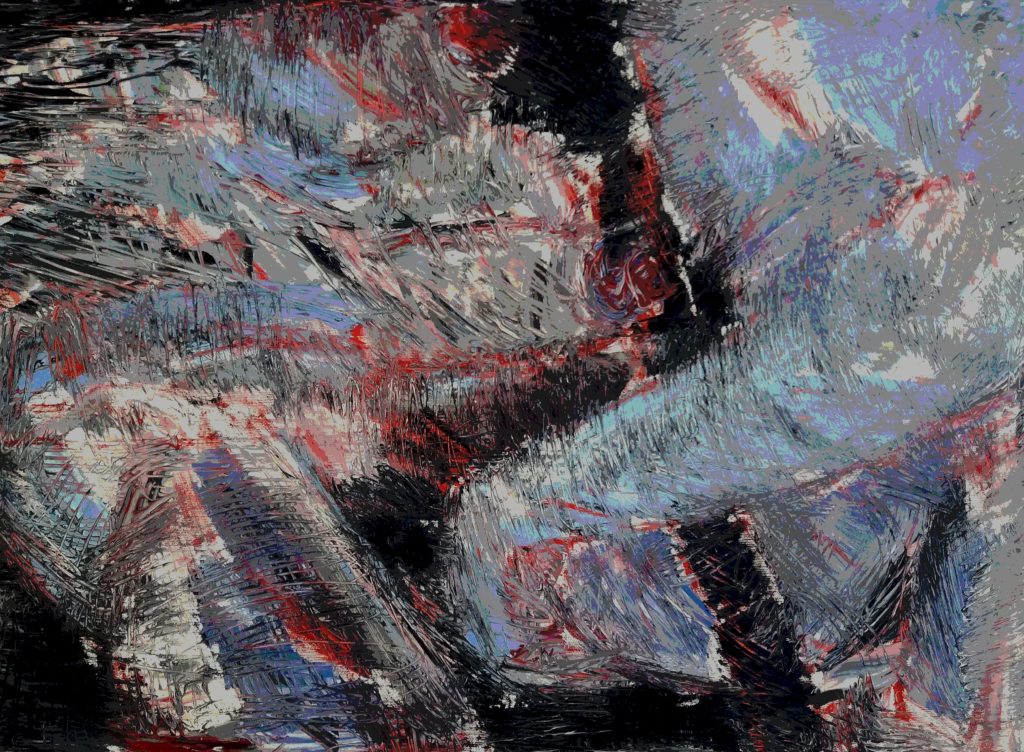
In Selfie Konopka enters the depths of his personal emotional universe, leaving out the importance of exteriority and form to emphasize essence, to what he wants to glimpse of that self still to be discovered, to be explored, to leave to be revealed. The meaning of the painting lies in the research itself, in the abandoning of the figurative element that seems to be inextricably linked to the title itself, to enter the universe more impalpable of the soul to which the artist feels the impulse to give voice. The soft colors of the celestial shades are mixed with the more decisive red and black, the scratching is strong, incisive, impetuous, almost as if to describe the alternation of emotions that are accumulated in our most intimate part, which stratify in the course of circumstances and events and give rise to the people we will become a moment later. The courage to look down at those impetuosity, to look into that vortex of sensations, becomes a need to confront them, take note of them and overcome them to become more aware.
Marta Lock – art critic, novelist, aphorist, essayist, reviewer, sociopsycholog
